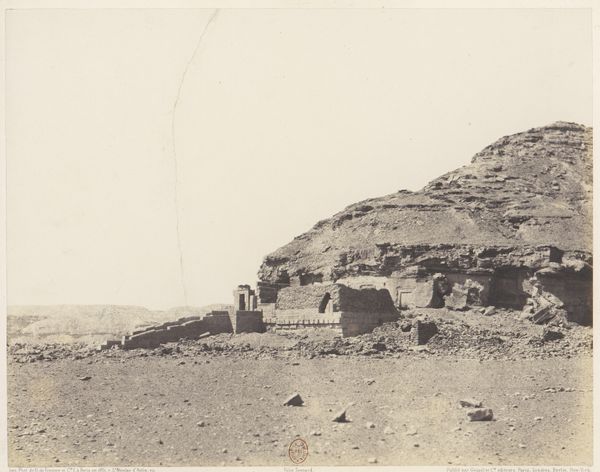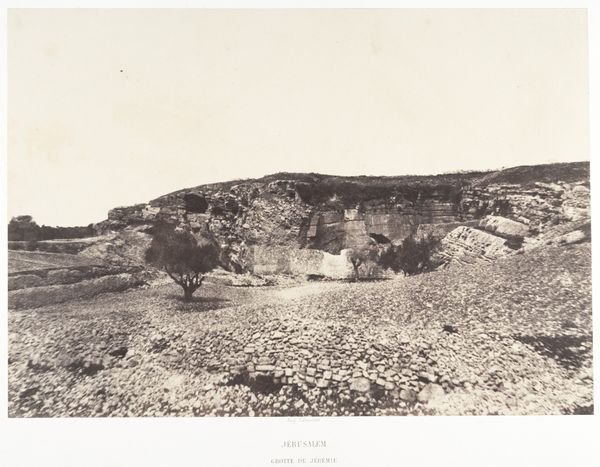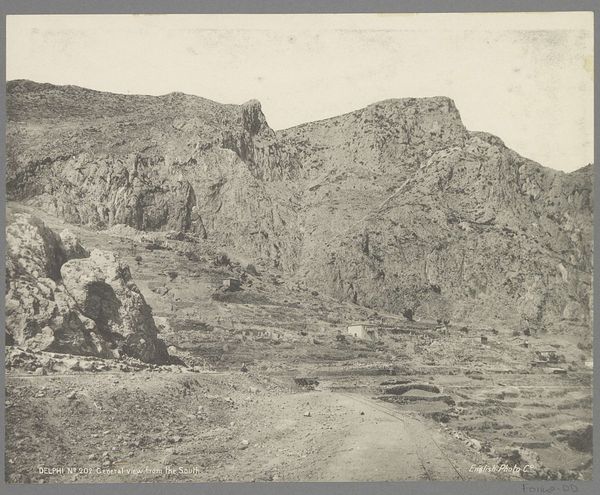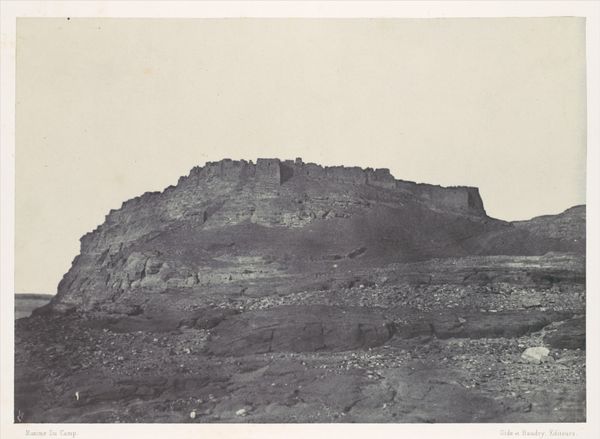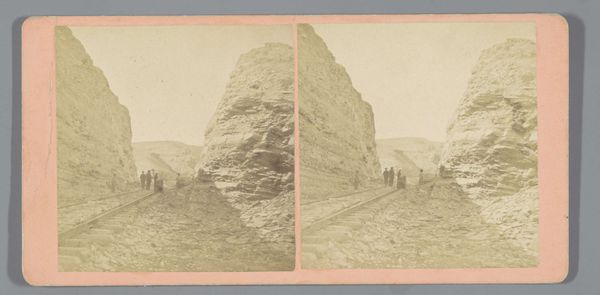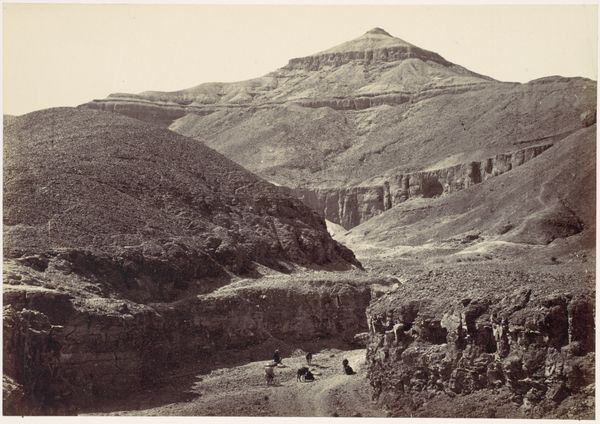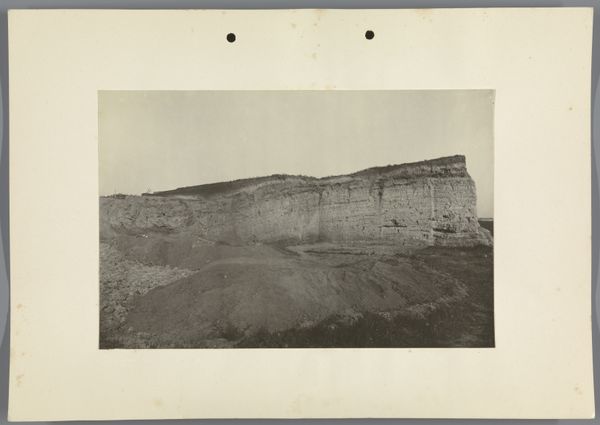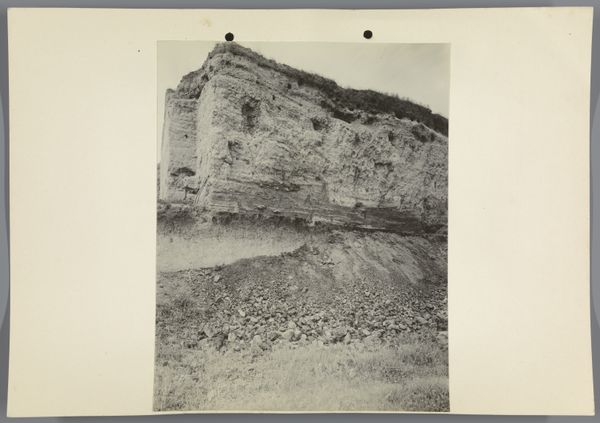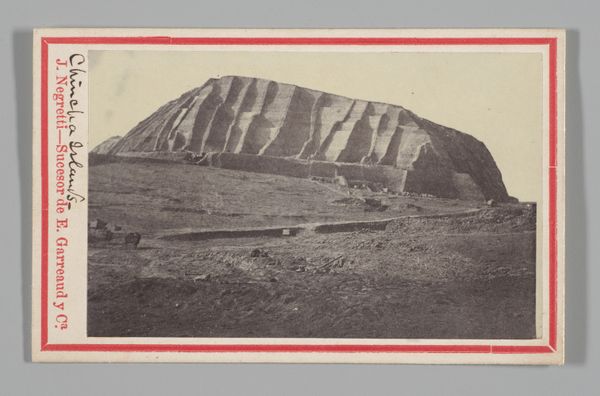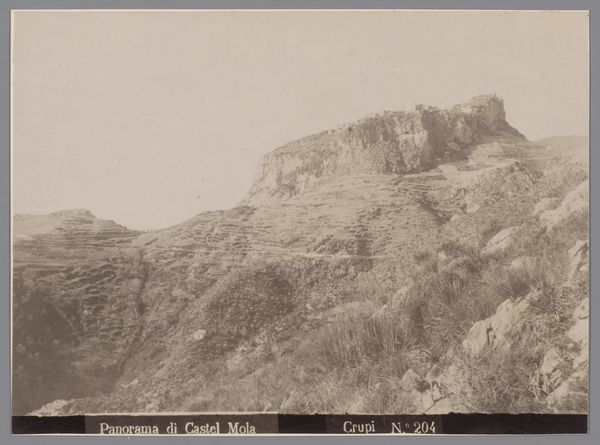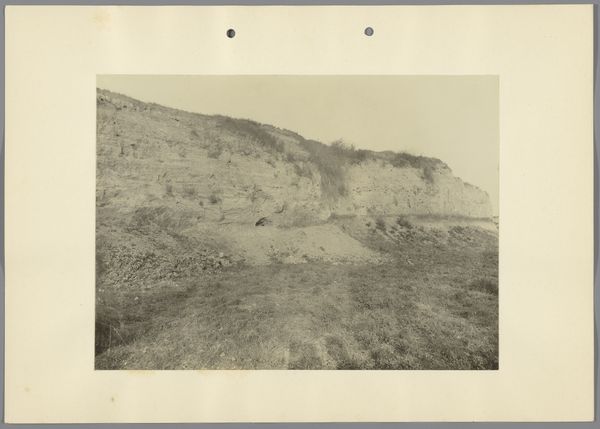![[Acropolis, Athens, Greece] by James Robertson](/_next/image?url=https%3A%2F%2Fd2w8kbdekdi1gv.cloudfront.net%2FeyJidWNrZXQiOiAiYXJ0ZXJhLWltYWdlcy1idWNrZXQiLCAia2V5IjogImFydHdvcmtzLzllNTNiYjQzLWY2Y2EtNDI4Ni1iMWMwLTc4N2JjYzUyMTA0MC85ZTUzYmI0My1mNmNhLTQyODYtYjFjMC03ODdiY2M1MjEwNDBfZnVsbC5qcGciLCAiZWRpdHMiOiB7InJlc2l6ZSI6IHsid2lkdGgiOiAxOTIwLCAiaGVpZ2h0IjogMTkyMCwgImZpdCI6ICJpbnNpZGUifX19&w=3840&q=75)
photography, gelatin-silver-print
#
greek-and-roman-art
#
landscape
#
photography
#
ancient-mediterranean
#
gelatin-silver-print
Dimensions: Approx. 11 x 15
Copyright: Public Domain
James Robertson captured this albumen silver print of the Acropolis in Athens sometime in the mid-19th century. The process involves coating paper with egg white and then silver nitrate, making it sensitive to light. It's not your typical high art material, but a blend of chemistry and craft. Look at how the process influences the image. The light creates a sepia tone, rendering the ancient stones in soft focus. You can almost feel the weight and texture of the rock, each detail revealed through a careful chemical dance. Robertson, who trained as an engraver, would have understood the power of line and tone. What’s fascinating here is how photography, a relatively new medium at the time, was used to document historical sites. It’s not just about recording; it's about framing, selecting, and interpreting. It required labor: from preparing the photographic plates to lugging equipment to Athens. It collapses the distinction between documentation, artistic expression, and the sweat of human labor. Understanding the materials and making of this image allows us to engage with its complex layers of meaning, far beyond just a pretty picture.
Comments
No comments
Be the first to comment and join the conversation on the ultimate creative platform.
